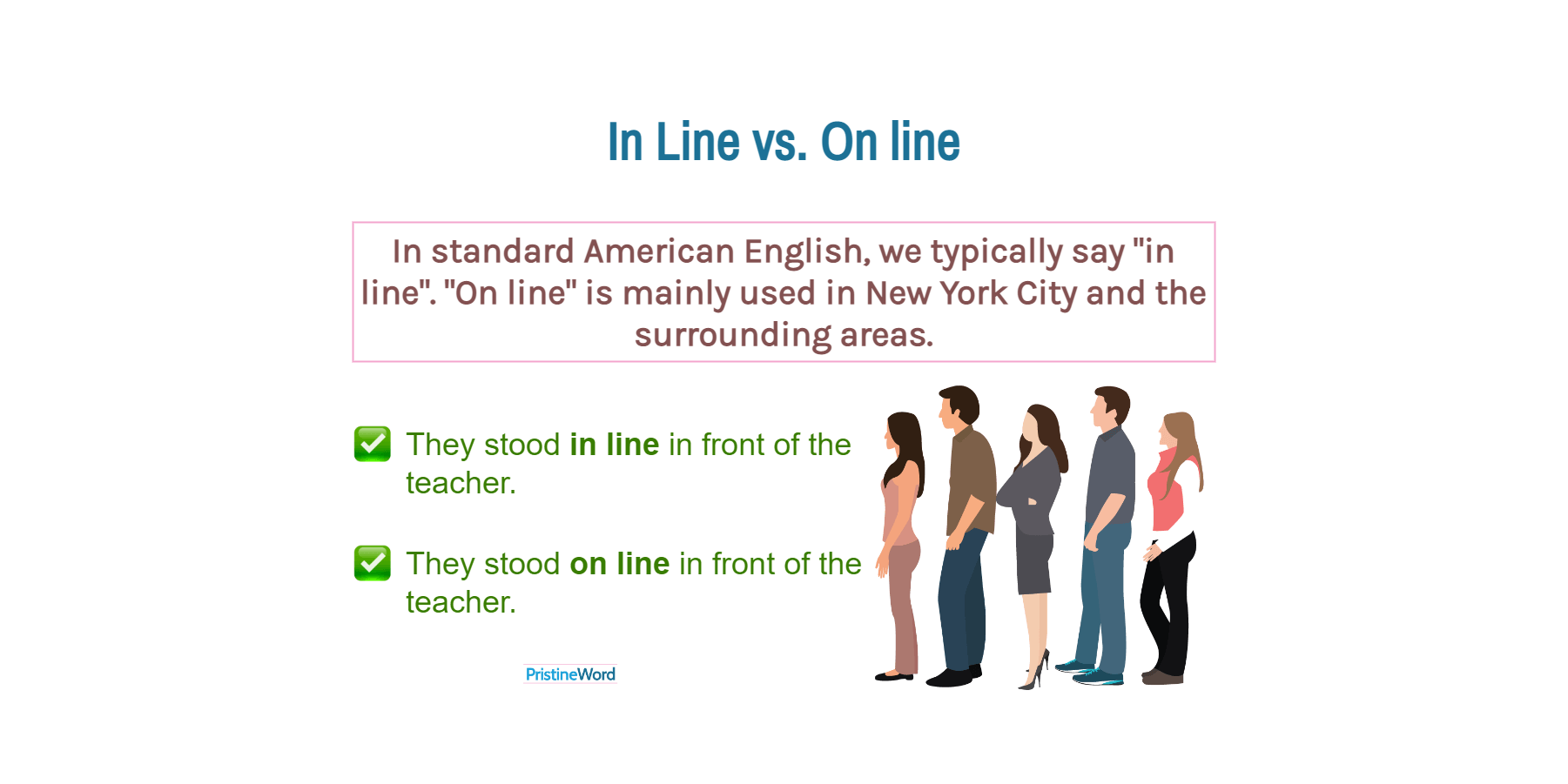In standard American English, we typically say "in line". "On line" is mainly used in New York City and the surrounding areas.
In standard American English, we typically say "in line". "On line" is mainly used in New York City and the surrounding areas.
They stood in line in front of the teacher.
They stood on line in front of the teacher.
While both phrases have the same meaning and are correct, "in line" is much more common.
Patricia had to wait in line for four hours.
Notice that the article "the" is typically unnecessary with the expressions "be in line", "stand in line", "wait in line", or "get in line".
Most people hate standing in line.
We also use the expression "cut in line" when someone goes in front of other people who are waiting in line.
If you see a pregnant woman waiting, let her cut in line.

